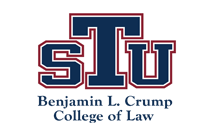St. Thomas Law Review
First Page
88
Document Type
Comment
Abstract
The movie Jerry Maguire follows a successful sports agent who questions the morals of his work, which leads to him being stripped of his contribution at his firm and being left with one client. Throughout the movie, Maguire struggles to build his clientele while pursuing the best interests of his only client, Rod Tidwell. Somewhere along the way, Tidwell uses the word “Quan” and leaves Maguire perplexed; “Quan? That’s your word?” Tidwell replies: “Yeah, that’s my word. You know some dudes might have the coin. But they’ll never have the Quan.” “Wha…what is that?” Maguire asks, still clearly confused. Tidwell spells it out for him: “It means love, respect, community, and the dollars, too. The entire package. The. Quan.” On June 12, 2020, Florida Governor Ron DeSantis signed into law the “Intercollegiate Athlete Compensation and Rights” Bill. The law took effect on July 1, 2021, joining multiple states throughout the country with the same enactment date. According to the preamble, Section 1006.74 of the Florida Statutes was adopted for the following purpose: “[t]he Legislature finds that intercollegiate athletics provide intercollegiate athletes with significant educational opportunities. However, participation in intercollegiate athletics should not infringe upon an intercollegiate athlete’s ability to earn compensation for his or her name, image or likeness.” The law continues by stating that the compensation earned by college athletes “must be commensurate with the market value of the authorized use of” his or her name, image or likeness (“NIL”). Commentators have speculated what exactly “market value” may mean and who enforces and calculates the value once the law becomes enacted. One legal analyst has commented that if the determination of “fair market value” were left to the National Collegiate Athletic Association (“NCAA”) or its members, it “would be vulnerable to claims of illegal price fixing under federal antitrust law.” Additionally, the college sports world has had its fair share of scandals in recent years, namely those involving accusations and ultimate findings of price fixing. With the recent controversy facing the NCAA, critics have disapproved state NIL bills as either codifying the goals of the organization (namely maintaining the “amateurism” model) or being too weak in its structure to be enforced effectively. Since this topic has become a contentious nationwide issue, the Department of Justice’s Antitrust Division has recently become involved in applying pressure to the NCAA to allow NIL compensation and making sure that any new policies are not anticompetitive, such as amounting to illegal price-fixing. There have been federal bills proposed in the House of Representatives addressing the NIL compensation issue. However, the passing of a federal NIL law that will preempt state laws is something that may not come in the near future, according to some commentators. Florida is taking advantage of the situation both with the federal government and with other states; because Florida is one of the first states in the nation with an active NIL law, “colleges in Florida may already be enjoying an advantage in the highly competitive college recruiting market.” This Comment analyzes how the Florida Legislature should create an independent commission in partnership with the Florida Board of Governors and the State Board of Education to help determine what the fair market value of a student-athlete’s NIL is, ensure compliance with the NIL law, and mitigate the potential occurrence of illegal price-fixing among the NCAA and affiliate schools. Part II will analyze recent court cases, such as the ruling of In re National Collegiate Athletic Association Athletes Grant-in-Aid Cap Antitrust Litigation, 958 F.3d 1239 (9th Cir. 2020), which found the NCAA and eleven of its thirty-two conferences liable of horizontal price-fixing, as well as recent scandals of conflicts of interest in Florida college sports. Part III analyzes the benefits of transparency in regulation and the potential conflicts of interest that can arise with related parties to an NIL contract. Part IV will propose a solution to prevent conflicts of interest from entering the realm of NIL compensation and potentially limit price-fixing. Part V will conclude with an overview of the proposed solution and how this will protect student-athletes in the realm of NIL compensation.
Recommended Citation
Alexa Rae Martinez,
The NIL Game Plan: How The Florida Legislature Can Become Student-Athletes' "Ambassador of Quan",
34
St. Thomas L. Rev.
88
(2021).
Available at:
https://scholarship.stu.edu/stlr/vol34/iss1/5

